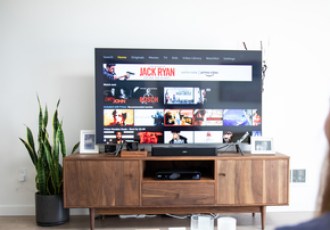We recommend these products based on an intensive research process that's designed to cut through the noise and find the top products in this space. Guided by experts, we spend hours looking into the factors that matter, to bring you these selections.

Ready to buy now? Shop the best:
We live in a Golden Age of television. Not only are there more options for watching shows and movies than ever before, but TV manufacturers like Sony, Vizio, Hisense, and Samsung also have the technology to show every frame in its pixel-perfect glory. It’s an exciting, and certainly a technically confusing, time to be a TV viewer.
Whether you are building the perfect home cinema to screen movies from the comfort of your living room or you just want the best TV for Super Bowl weekend, knowing the right features to get and the gimmicks to avoid is important.
Use our insights and advice to pick a set that does your content justice and wows the occasional guest!

When it comes to watching movies and shows in high definition, there are two main types of TV resolutions to consider: 1920x1080 (otherwise known as “full HD” or “1080p”) and 3840x2160 (otherwise known as “ultra HD” or “4K.”)
The numbers refer to the number of pixels each type can display. The more pixels on display, the greater the level of detail your TV is capable of showing.
First, let’s look at 1080p LED TVs. These are more affordable than 4K sets, and they are an ideal match for cable TV, DVDs, standard Blu-Ray discs, and every major streaming video service. A solid 1080p set may not have the astonishing detail of a 4K resolution equivalent. However, it will cost you hundreds less than a 4K TV, and it will still deliver a quality picture.
4K Ultra HD TV sets feature four times as many pixels as 1080p TVs do. What’s more, when paired with proper 4K content, these sets can transform any living room into a cinema.
Beyond adding more pixels, many 4K TV sets include game-changing features. These include HDR or OLED displays. Even models that are considered to be “mid-range” will significantly level up any home theater by producing more vibrant colors, deeper blacks, and stronger contrasts.
More feature-packed and all-around better looking than their HD and FHD counterparts, a 4K UHD TV is a must-have for anyone researching 65-inch TVs or even larger options.
Not all flat screen TVs are the same. In fact, the differences between them can be pretty stark.
There are currently three kinds of television panels being used to manufacture HDTVs. These are LED, OLED, and QLED TVs. Each has its own unique qualities.
First introduced in 2012, OLED TVs are a relatively new technology for mainstream consumers. The current high prices are expected to steadily drop over the next several years.
Not all HD TVs are built the same. Most models share a relatively smaller screen size and are fairly affordable. That said, there are a few important features that you should look for when shopping for a new HD TV:

Before deciding which HDTV you would like to own, consider these tips.
Attaching an LED strip to the back of your HDTV creates a glow from behind its bezels. This is known as “bias lighting.” The effect enhances the picture by highlighting the contrast and frame of the TV’s picture.
You might be surprised to learn that TV antennas have made a return to the main stage! Today’s antennas are flat, thin sheets you place in a window. By installing one, you gain access to live TV stations without having to pay a subscription rate.
When looking for the best buy, the good news is, you need not spend a lot to get a great HD TV.
For under $300, you can get a full HD TV with 1080p resolution. Many of these options will be 32 inches in size, but you may find an occasional 43-inch display available.
The great thing is, you are very likely to find an inexpensive HD TV for even less than that. Many great companies, including Vizio, TCL, and Samsung, offer excellent TVs that cost under $200.
Soundbar: We are fans of soundbars for several reasons. The built-in speakers of a TV don’t have quite the oomph of a soundbar; if your dream is to create a cinematic experience at home, a soundbar can bring you that much closer.
Wall mount: Wall mounting seems to be all the rage these days with TVs. We are not surprised. With a wall mount, you save precious floor space and minimize clutter. You also can get a really great viewing angle.
Theater seating: You can create the atmosphere of the movie theater — a very upscale one — at home with dedicated theater seating.

A. Several factors contribute to the relatively affordable price of HD TVs. This includes the fact that superior-looking 4K UHD displays are more popular. Many new HD TVs are rarely larger than a 32-inch model, and they may lack many important TV innovations like a quantum dot backlight, HDR10 (high dynamic range,) or full-array local dimming for noticeably deep black levels.
A. One method is to wait for holidays such as Thanksgiving and Memorial Day weekend. Major retailers tend to save their best discounts for popular shopping days.
A. If your computer has an HDMI video output, you can use your HDTV as a monitor for it with an HDMI cable. You may be able to project your display directly to your HD TV via Chromecast or a wireless display adapter plugged into the TV’s USB port.
Get emails you’ll love.
Learn about the products you’re wondering if you should buy and get advice on using your latest purchases.
